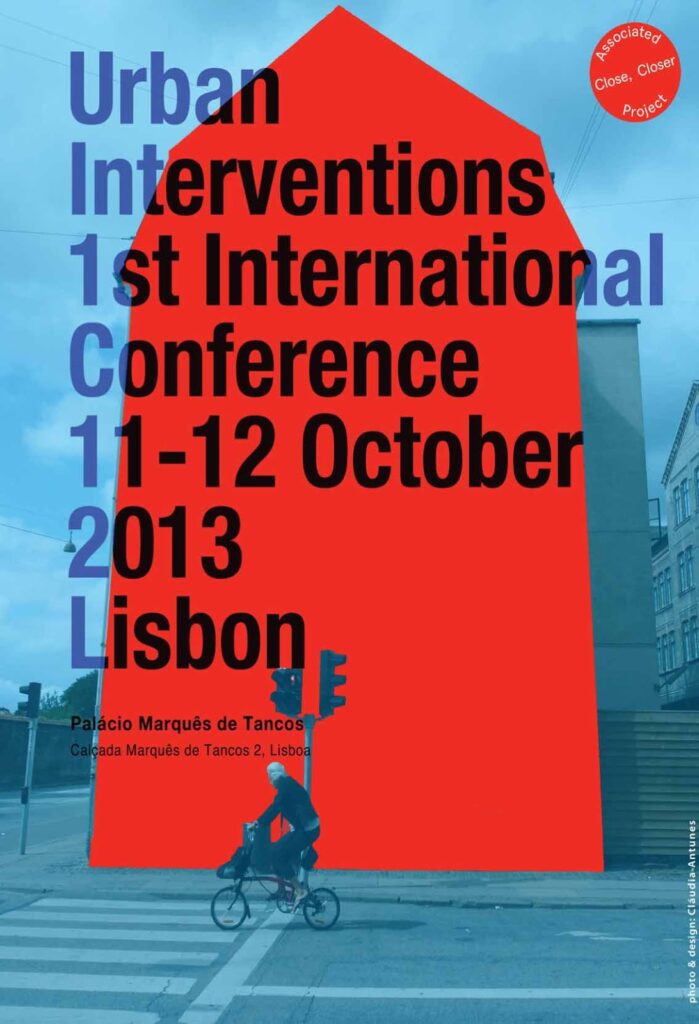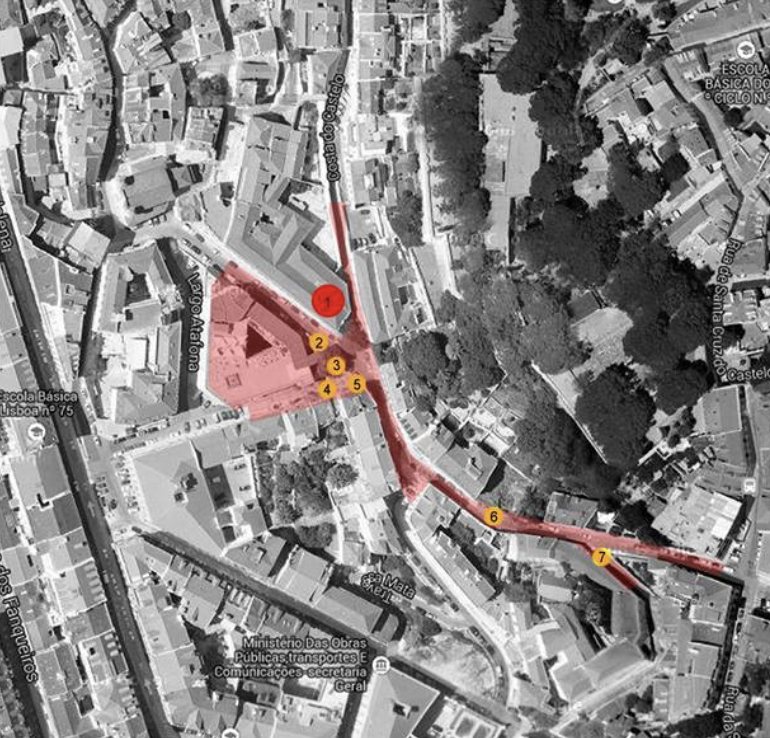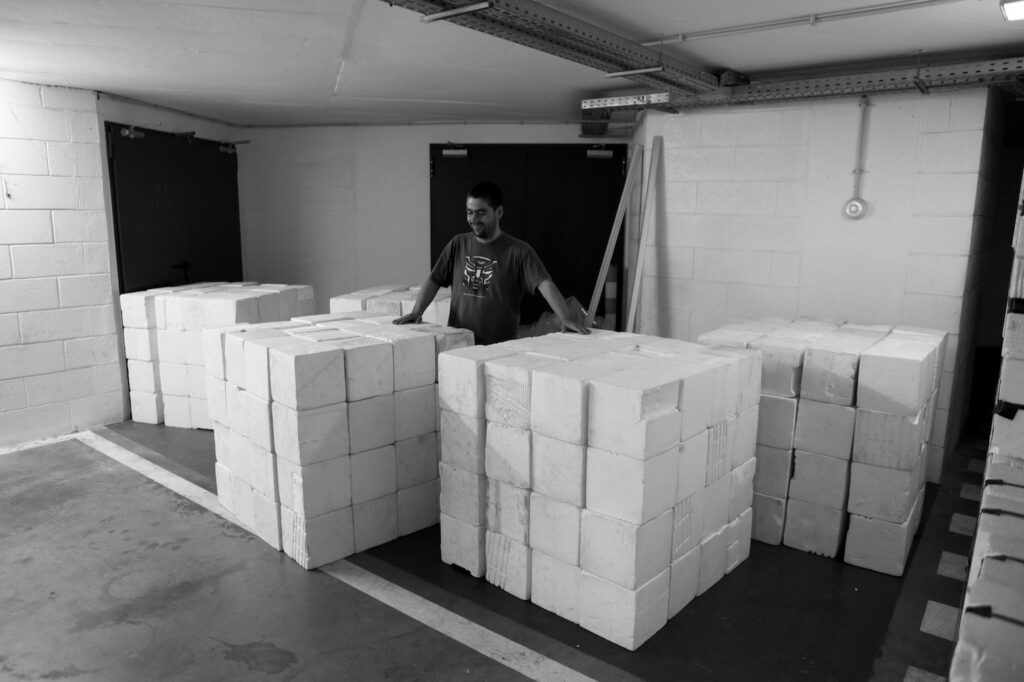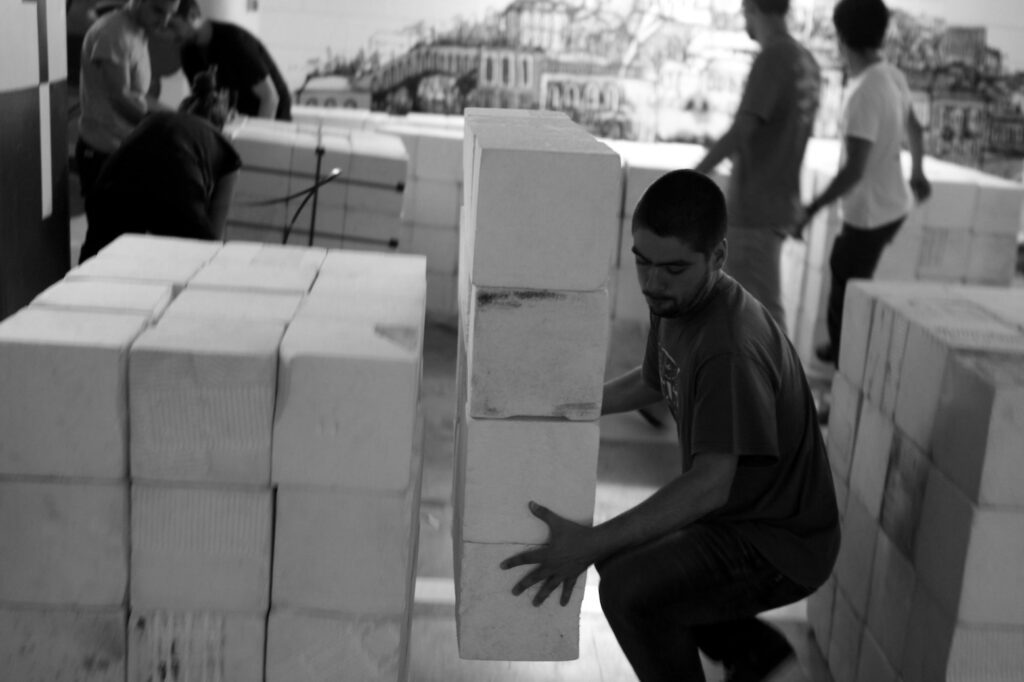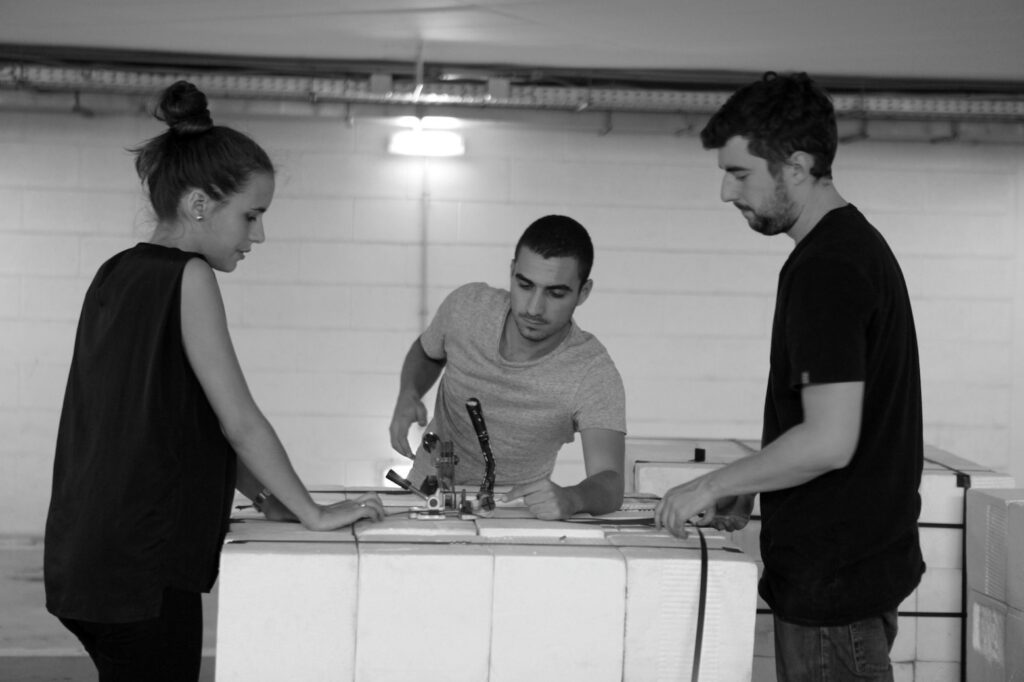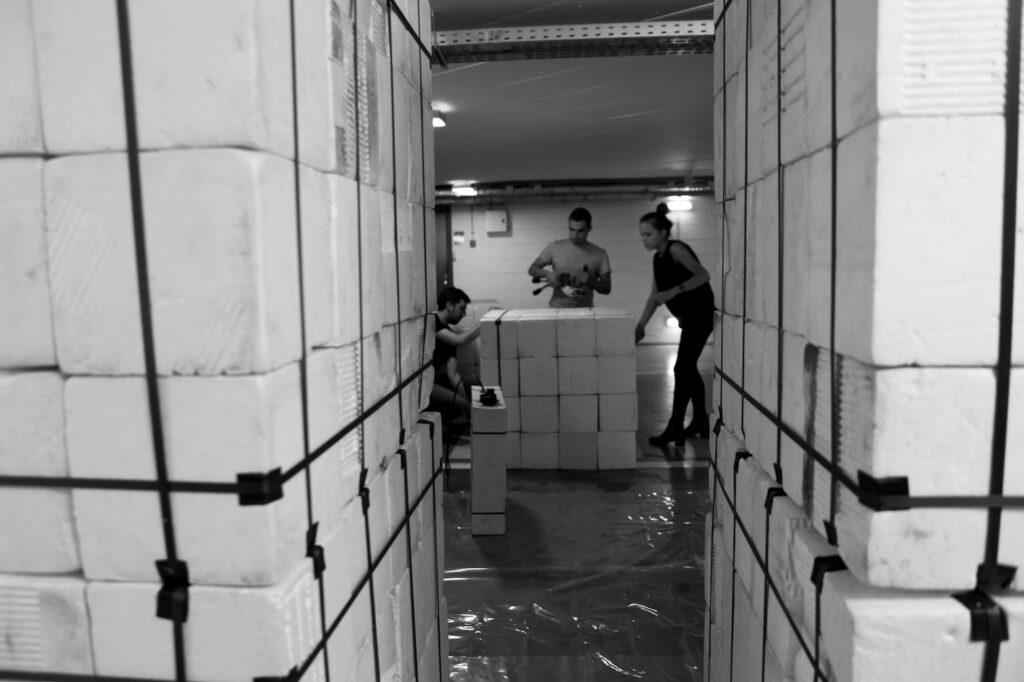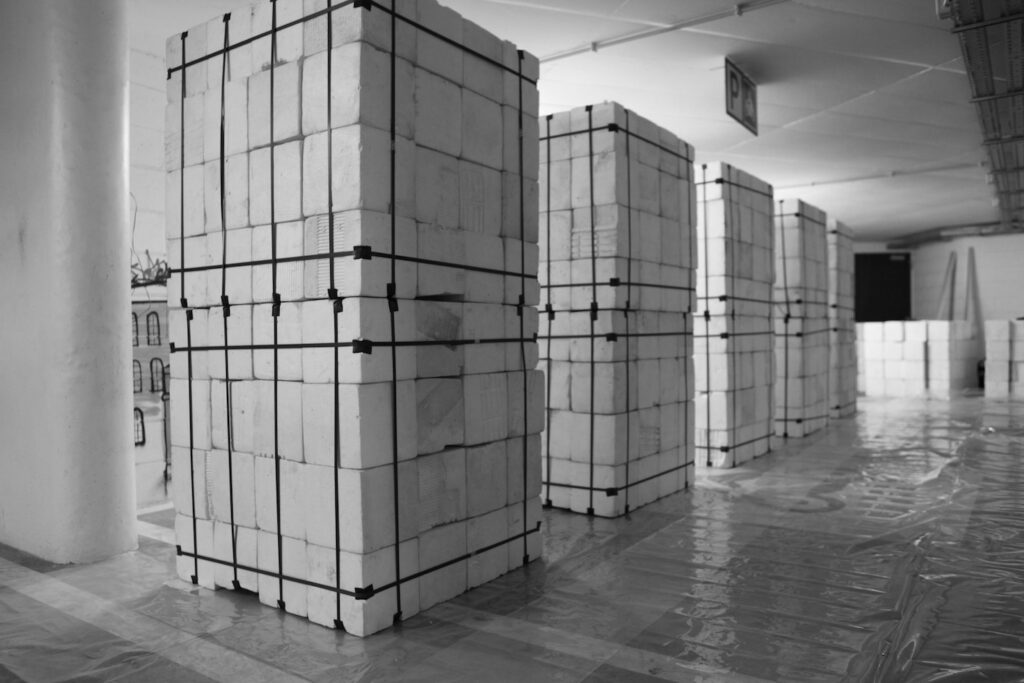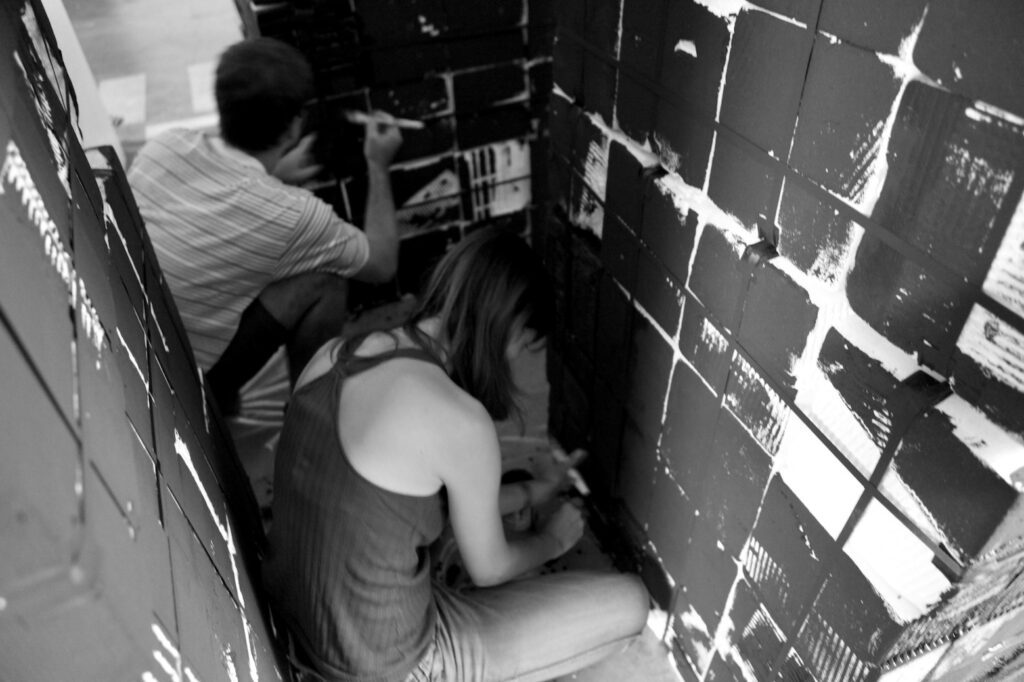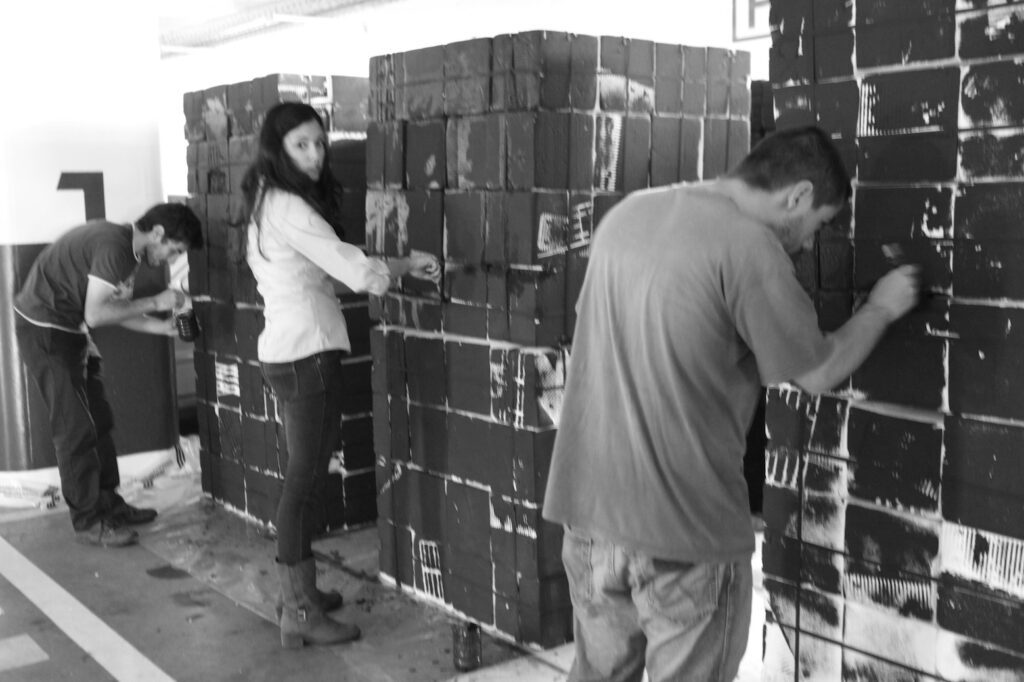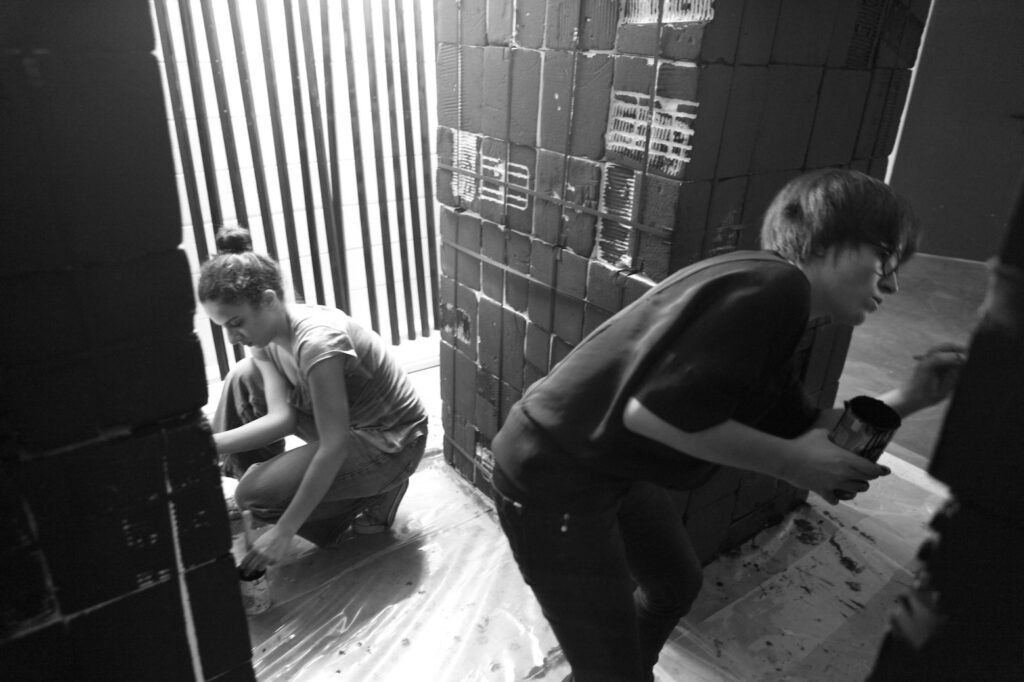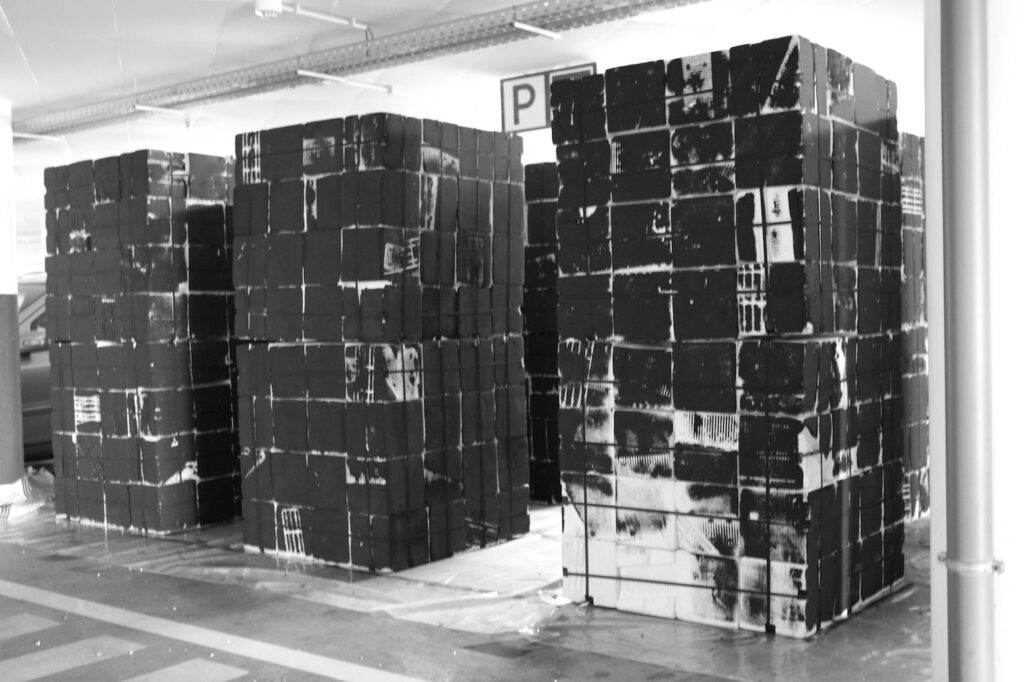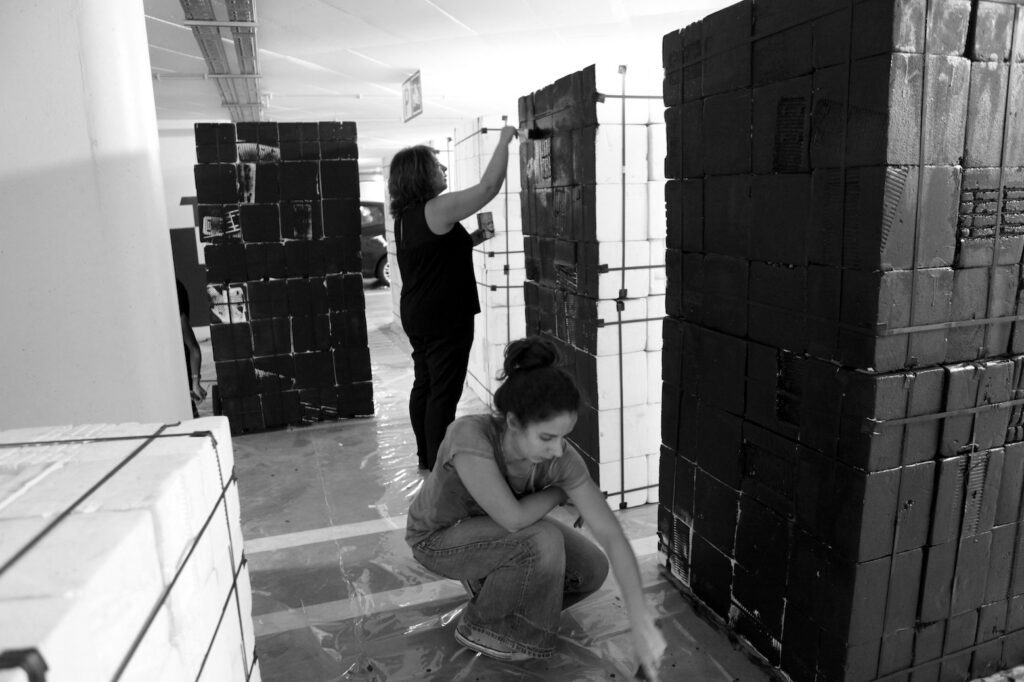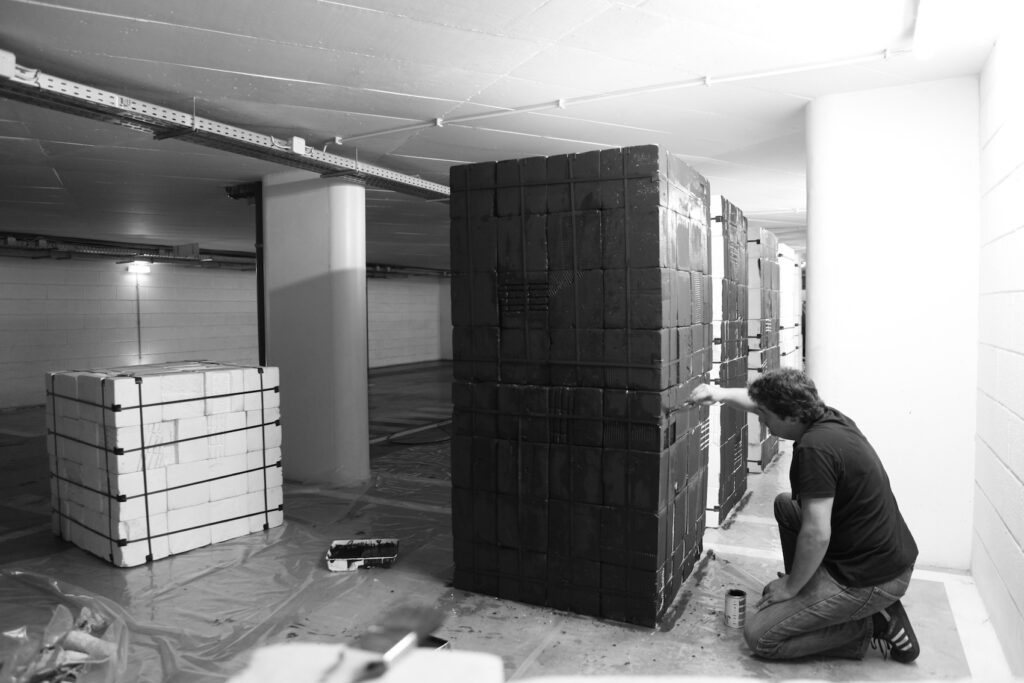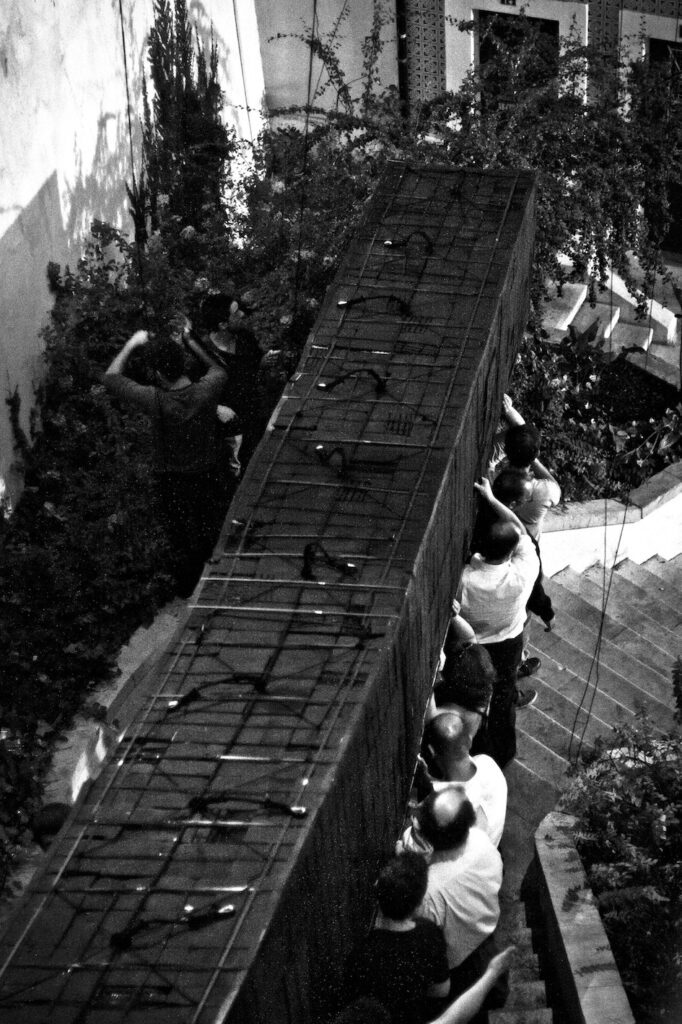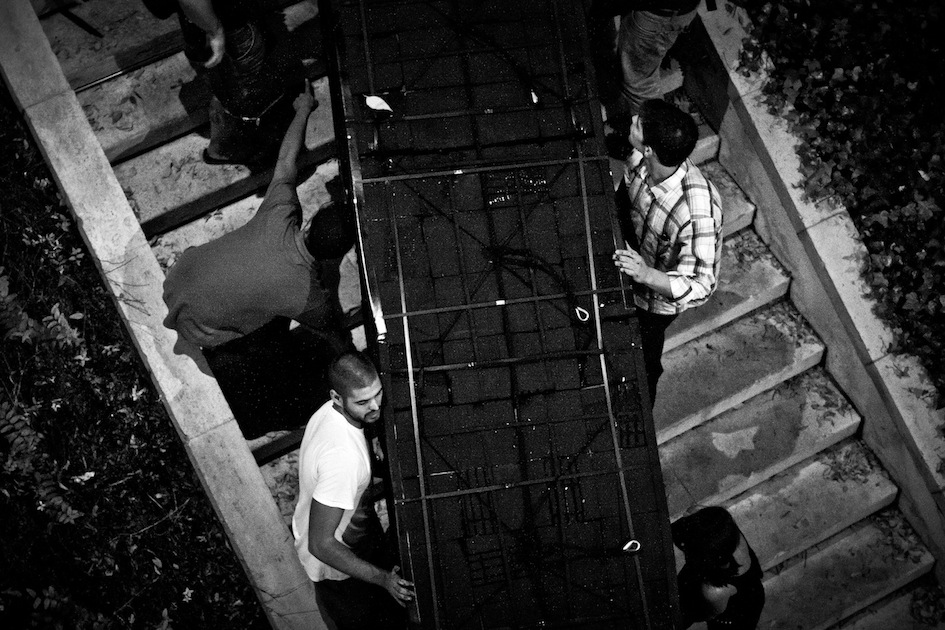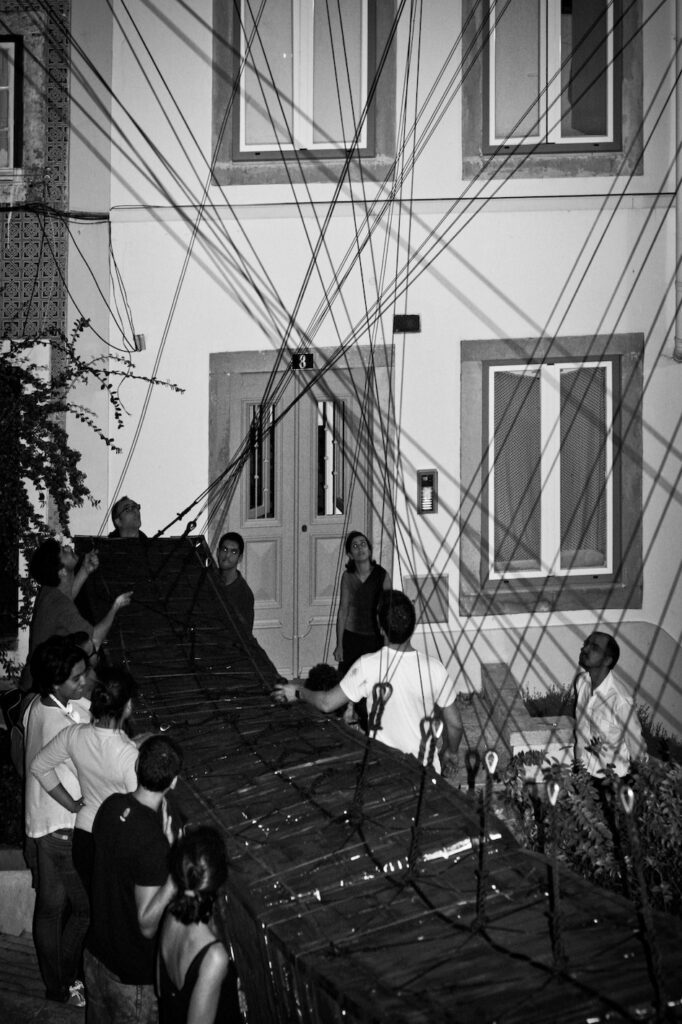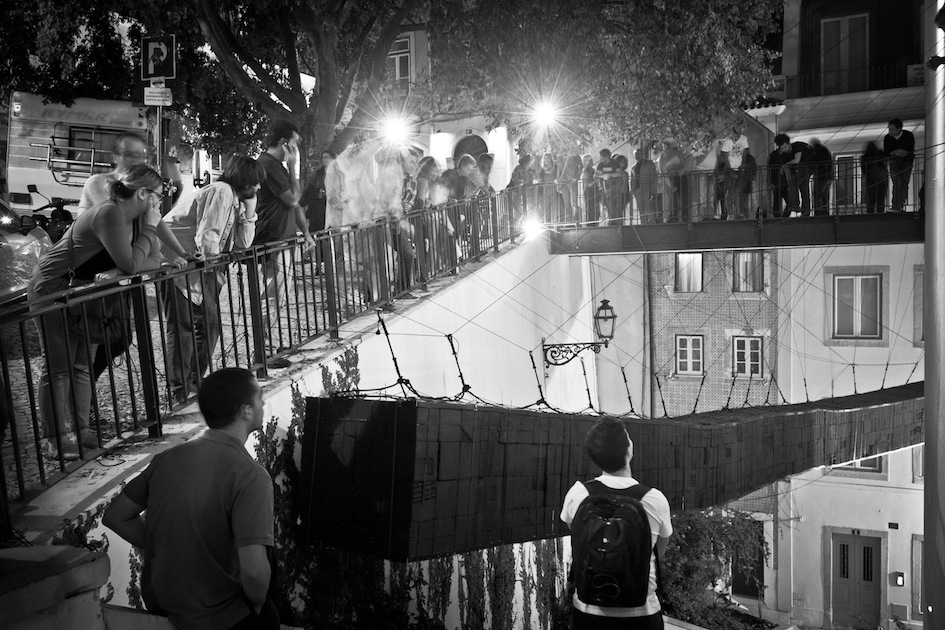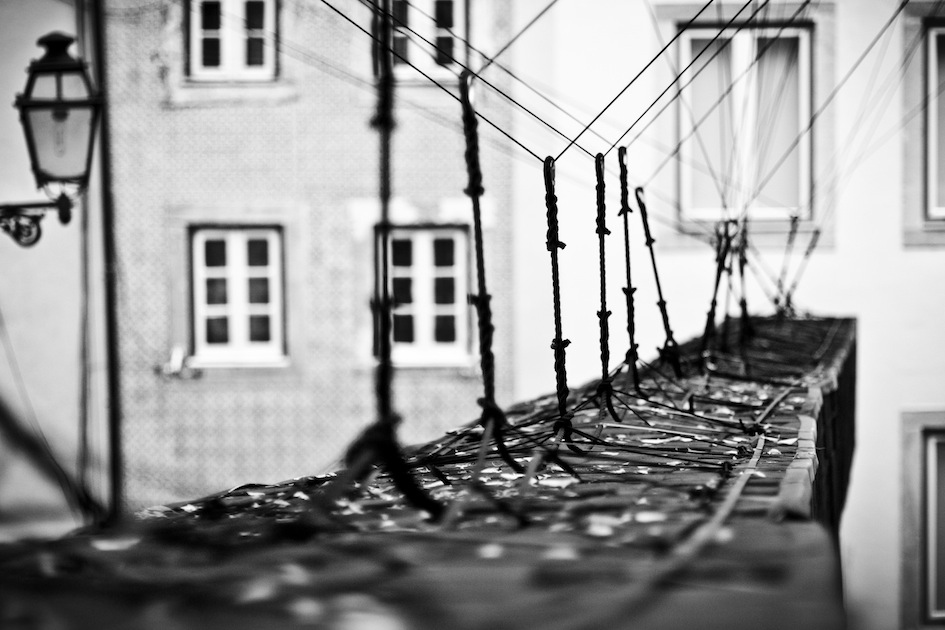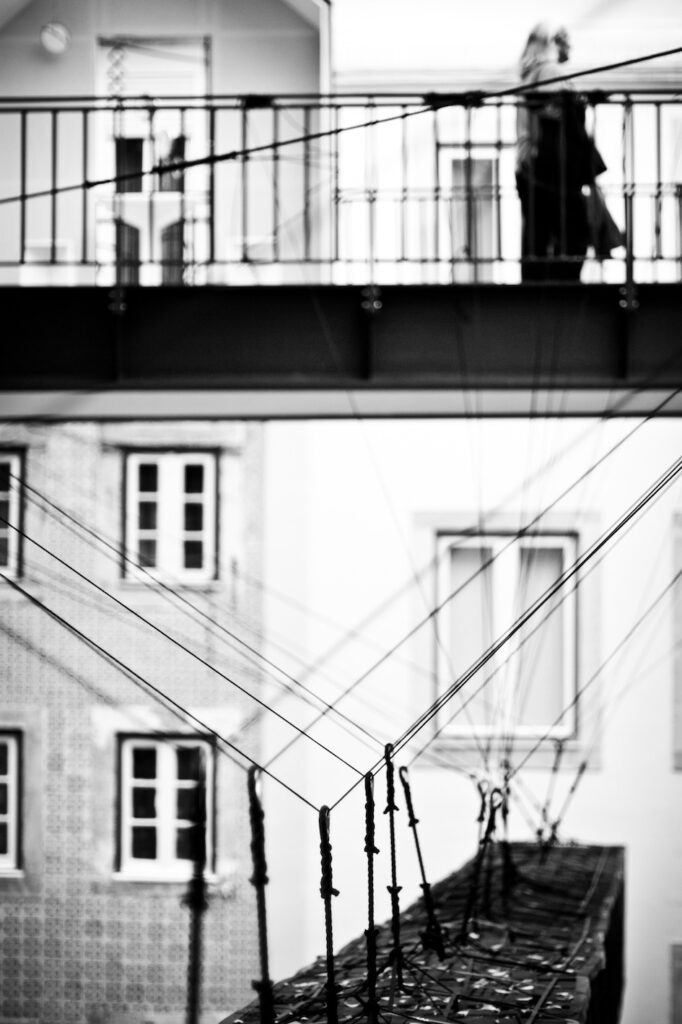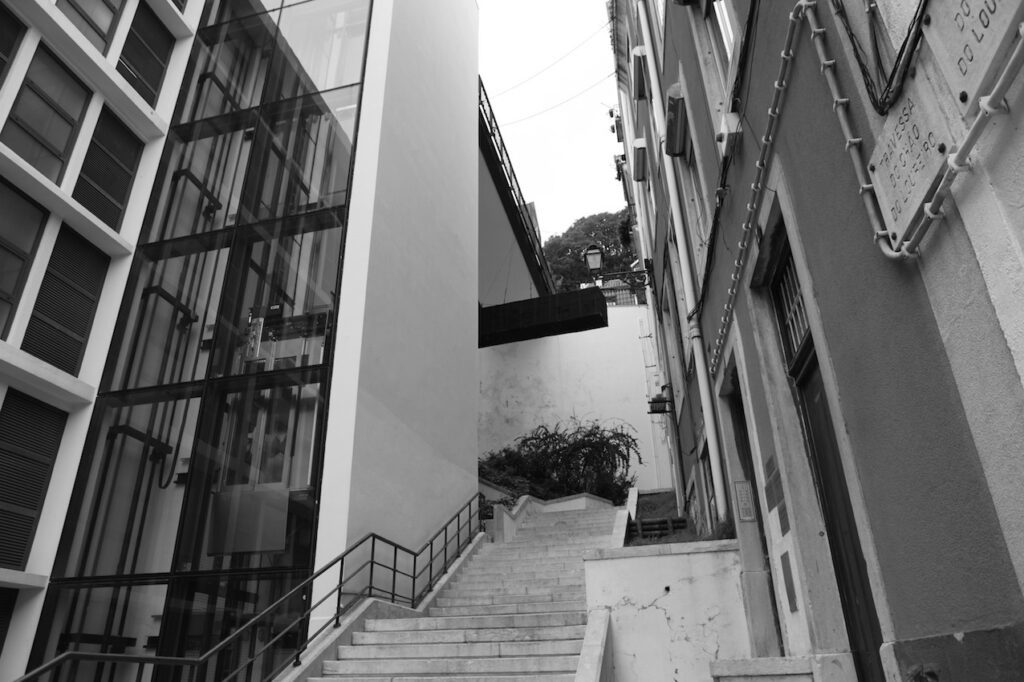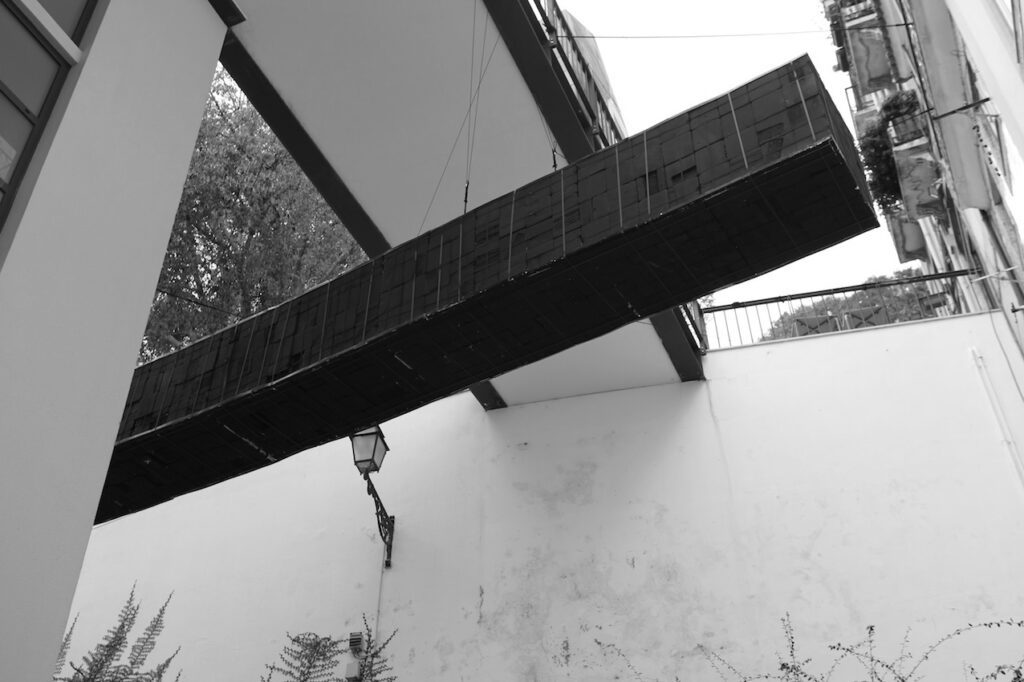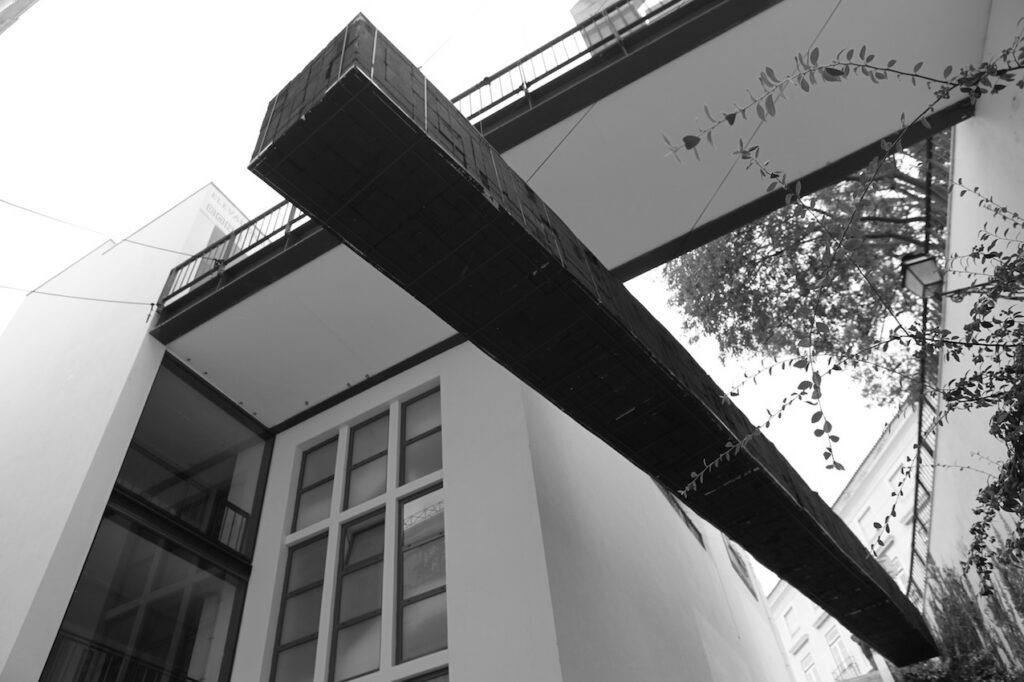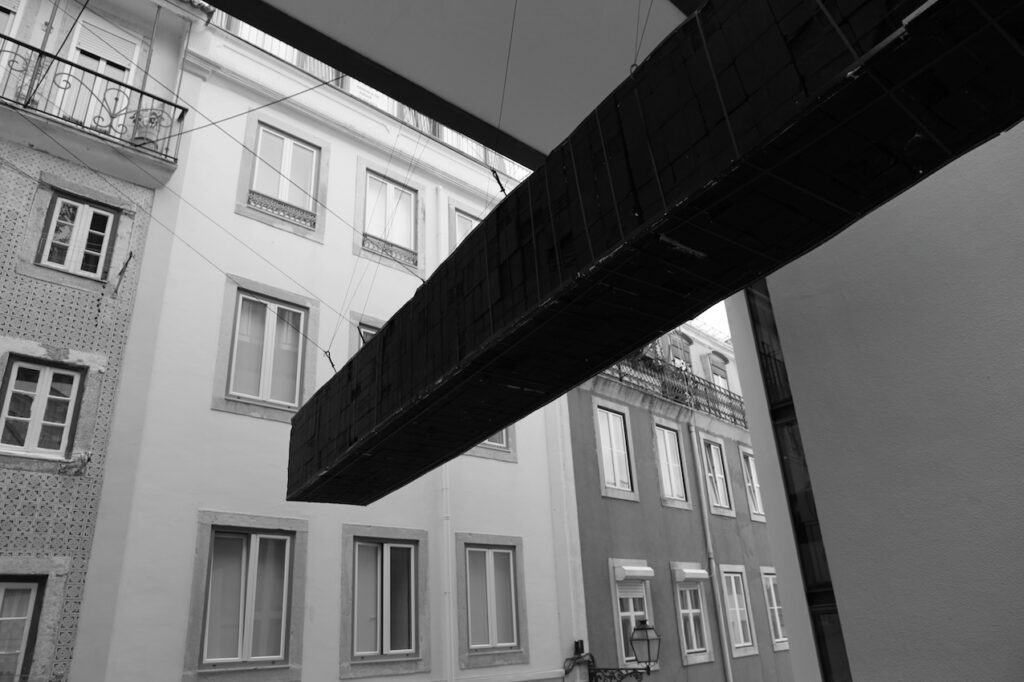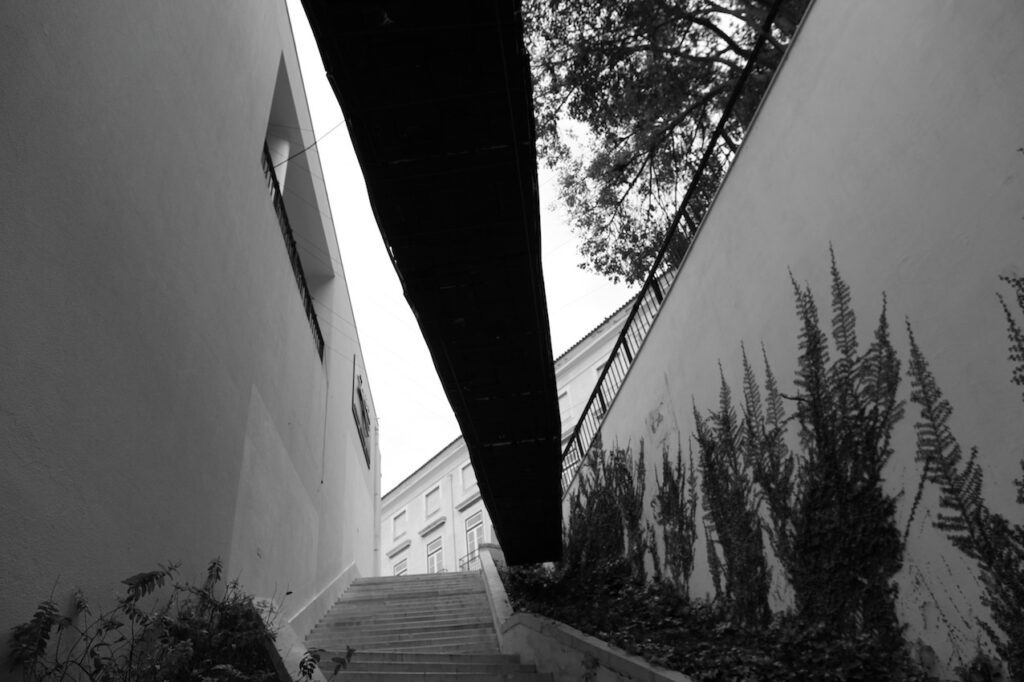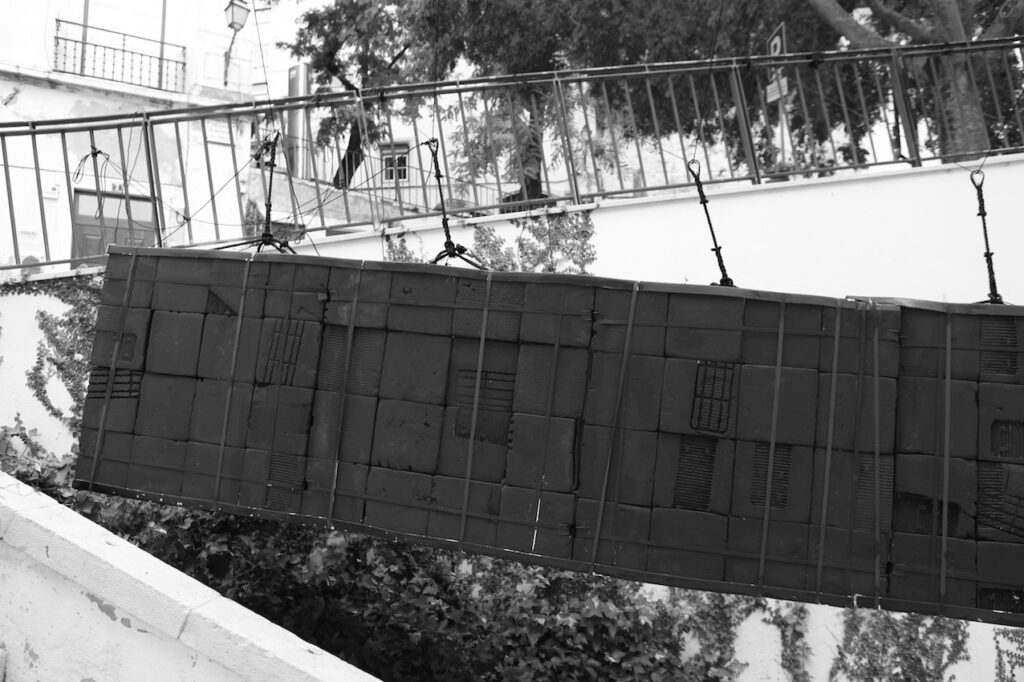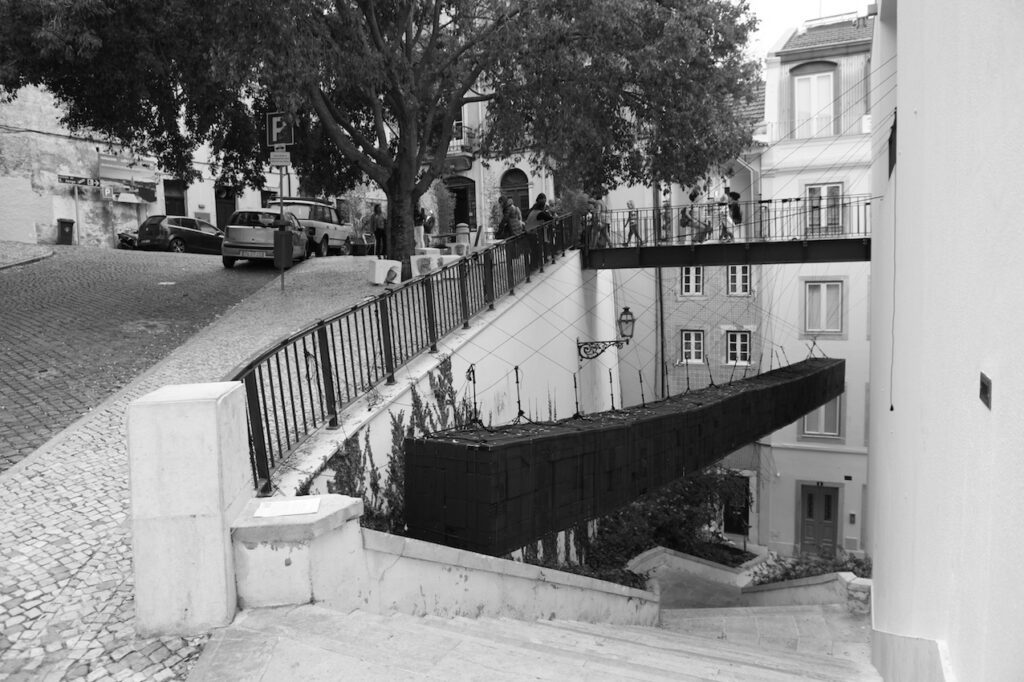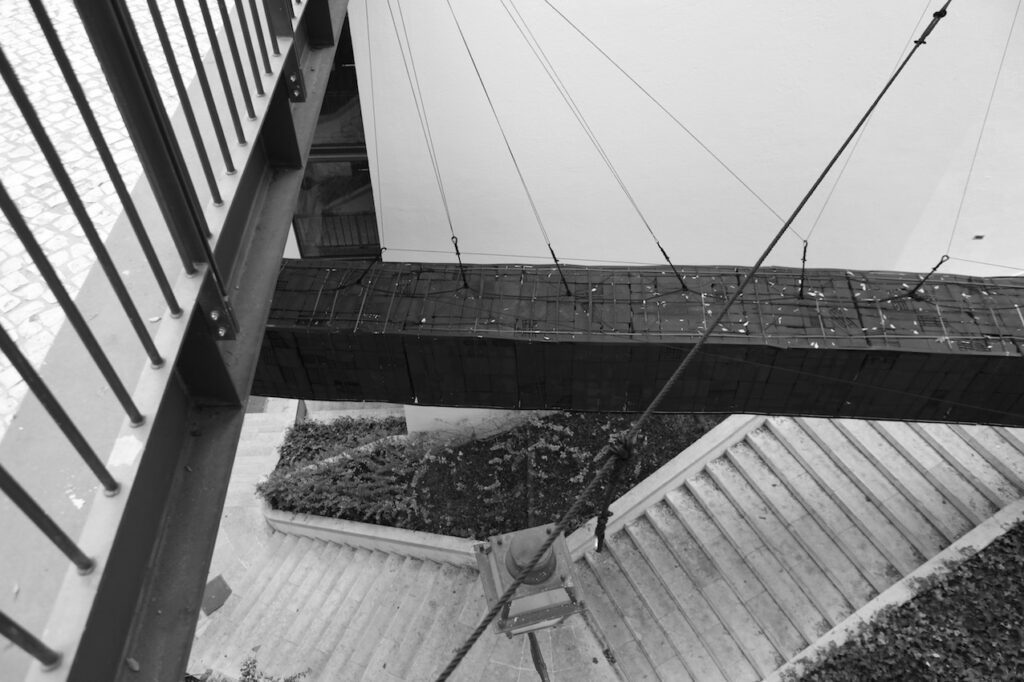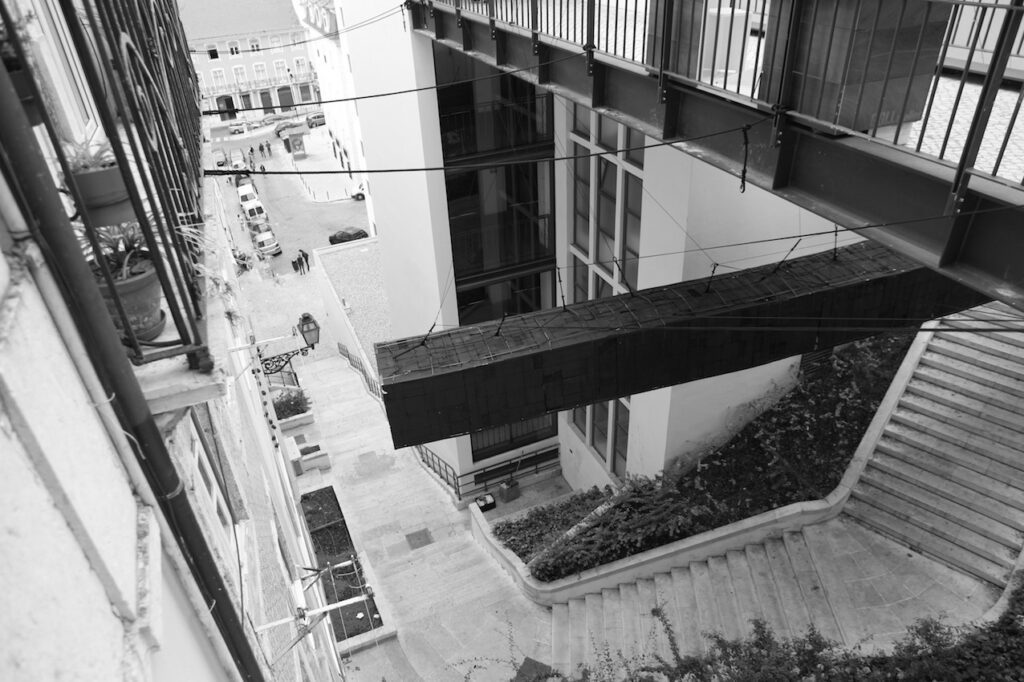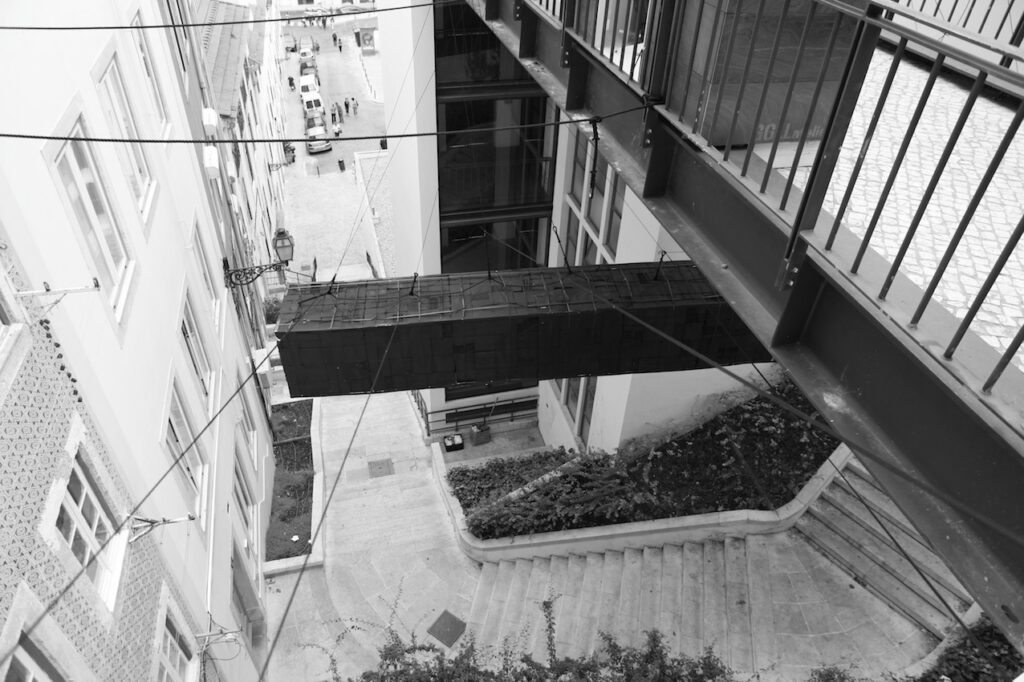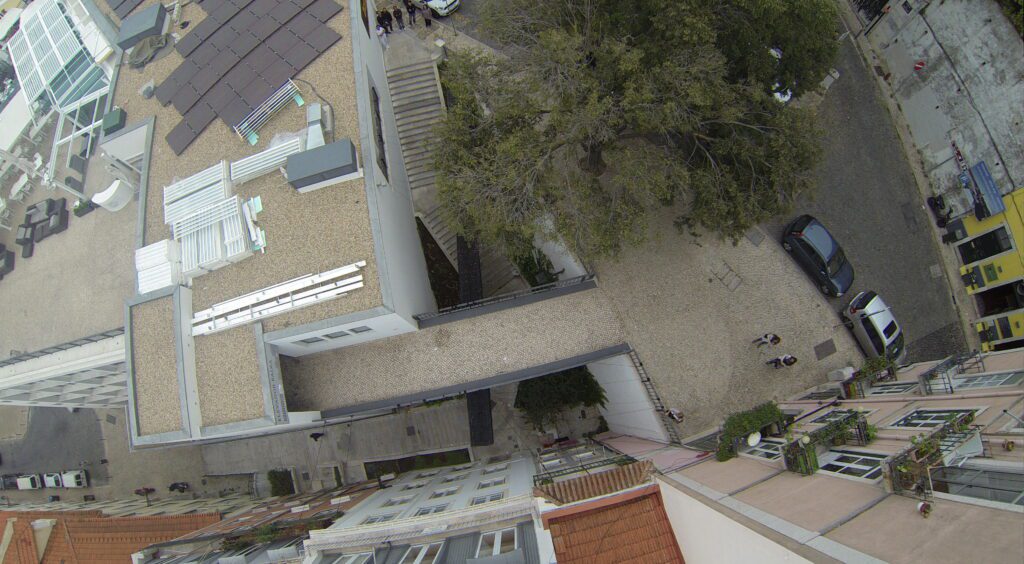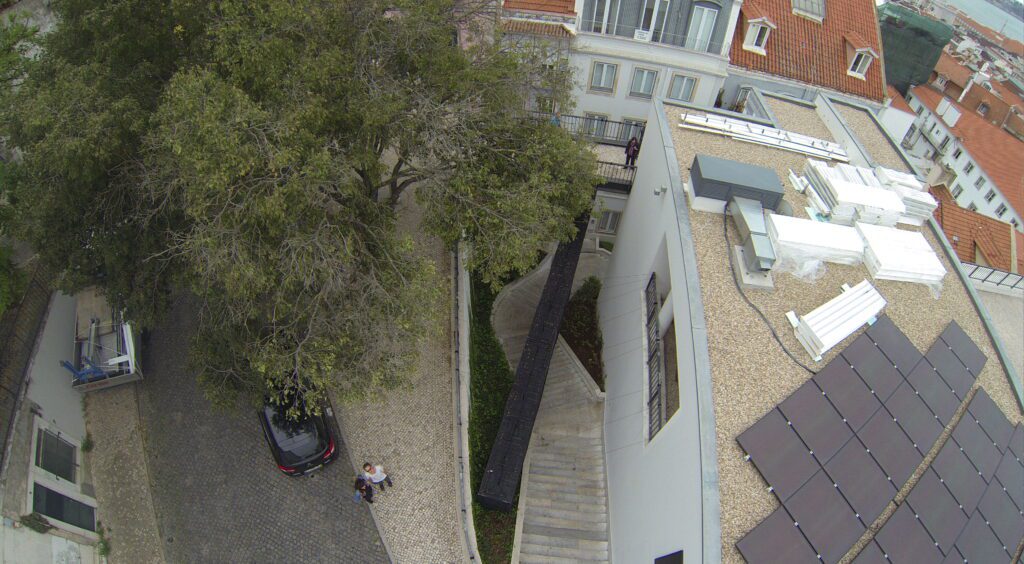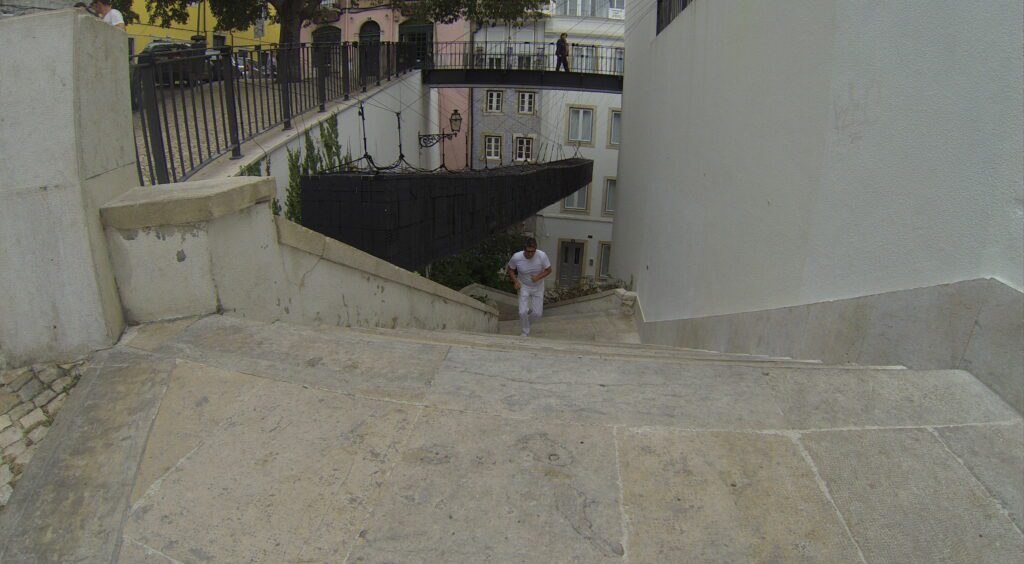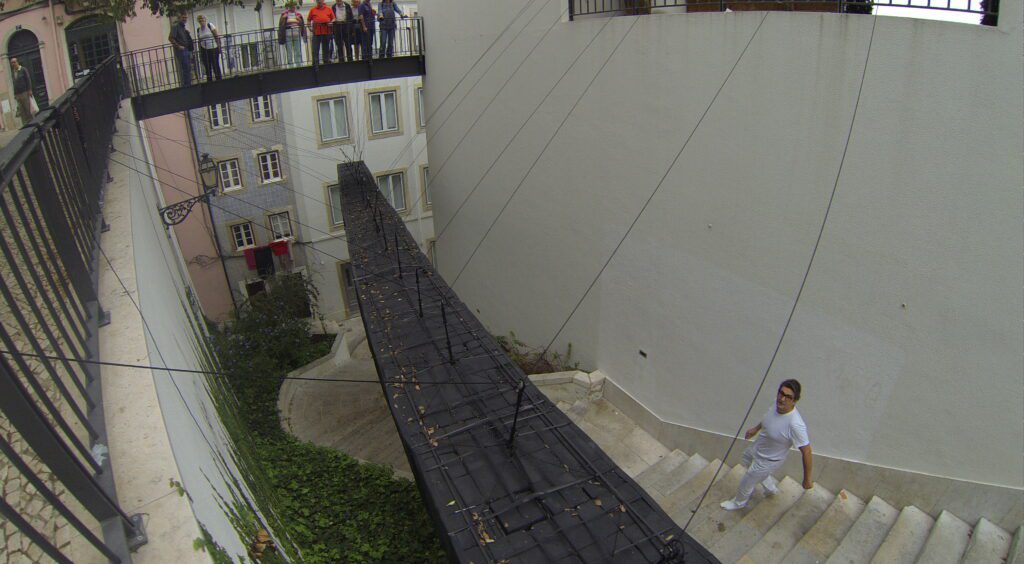2013 draw_05 | Project REDE | Lisbon
project project2013 draw_05 Text Pedro Machado Costa
[without] safety net: some notes about the devotion to unsteadiness
There’s that image of Philippe Petit, suspended over the emptiness, halfway between the Twin Towers of New York. If the photo is, for itself, imponderable, all in it seems yet to confirm it: to that implausibility made of the desire of crossing the highest of the emptinesses, suspended on the immateriality of a line. Of just a line.
All in there seems unlikely to us: from that man’s slow walking over the abyss to the abyss itself, of which the black and white of the photography enlarges up to the hugeness and, overall, the materiality of those two buildings, of which the nonexistence is shocking to us; making us conclude that after all that wire stepped by Petit gravitates between the emptiness and nothing.
From this episode, nothing is left but the doubt itself: the doubt about what made this man want to walk over the emptiness, the doubt about the use of that action and, overall, the doubt about what will be its consequences.
However, the significance of the image, even more than the end of the story starred by Petit, implies the distancing from those questions, which here become even prosaic; to carry us to that other place hallway between two things that don’t exist [no longer], but where all is now possible.
This way, at halfway between the two towers suspended in a time already suspended by the photography, it reveals an apparent absence of motion, inverse to the natural law of balance. Because, unlike of what Physics intends to make us believe, it is precisely in motion that resides the possibility of balance. And it is in stopping, in this stop of the tightrope walker, that the imminence of the fall is better demonstrated.
And afterwards: afterwards there is that other evidence: of someone or something to be able to hover, only supported by a line; being know that, by definition, a line is nothing more than a space of time covered between two points; undermining that way the authority of that other law of Geometry that dictates the impossibility of saving ourselves through something that has just two dimensions.
It’s here, in this unsteadiness made up of time suspension and space suspension, that resides the meaning of Tomaz Hipólito’s work with Project REDE.
Unlike Petit, that ended up by getting off unscathed from so immoderate adventure, the unlikelihood of Hipólito’s monolith justifies itself through that same possibility of the announced tragedy in the image of the crossing, revealing at this point the exact moment in which the absence of motion gives rise to unsteadiness; denying even so, paradoxically, the probability of the fall imposed by the Physics.
The monolith suggests yet a greater doubt: its intangibility conceals from us what it is made of, and its shape denies any use to it, any behavior; as though its apparent usefulness would confirm its own condition of suspension that is conferred to it.
Even so, just as in the image of the crossing, the work keeps away any ambition of deluding, of deceiving; revealing us, without shame, the mechanism to which it holds, in the air.
That way, REDE assumes the explanation of this stopped motion, sustaining them, time and space, and concentrating them in Hipólito’s monolith; turning by such impossible to side with that argument by which a line is just the distance between two distinct points: here the points themselves are what matters the less.
From this REDE, under which sooner or later other works will be installed which will most likely spread throughout the city skies, it inaugurates that idea as such: of becoming confronted with art not being more than the possibility of suspending things.
And yet, if the use of this collective’s proposal lies in there, there’s then a clear mislead in the way found to name this system: after all, just like Petit, we all continue walking over the abyss. Walking on the tightrope. Without safety net.
project
